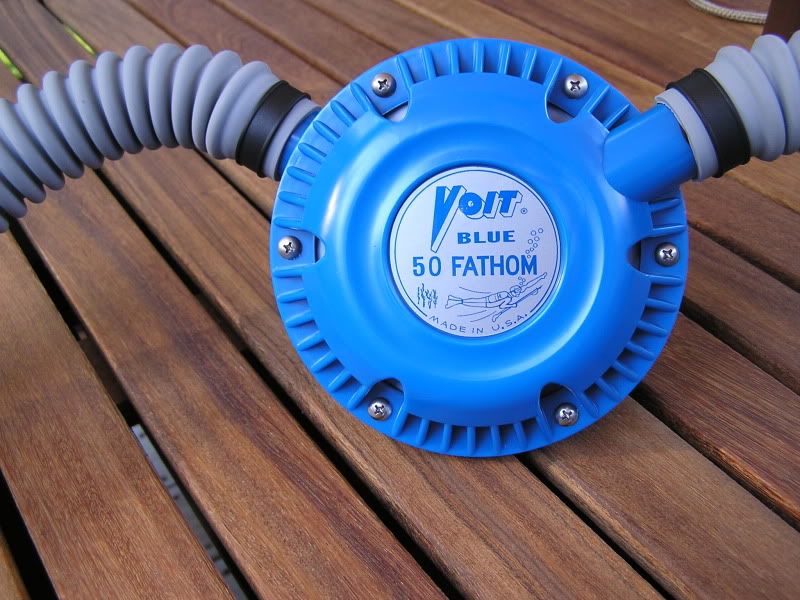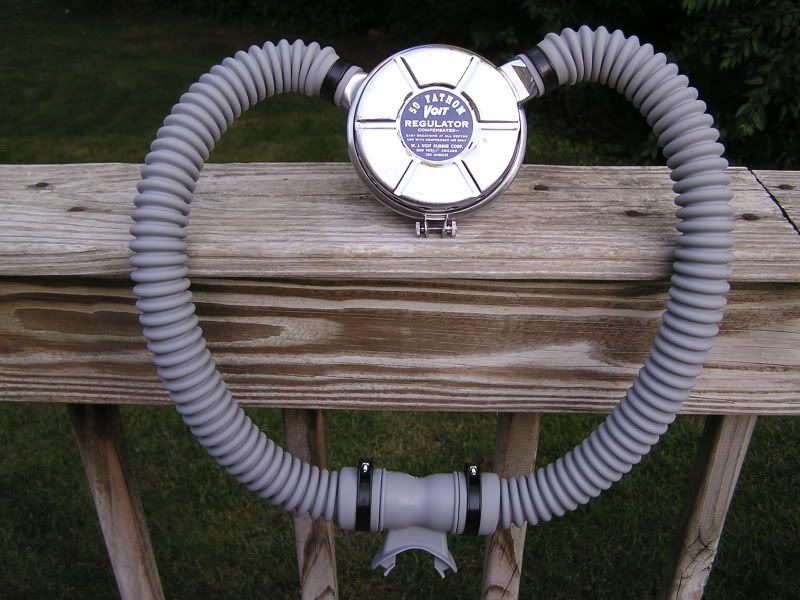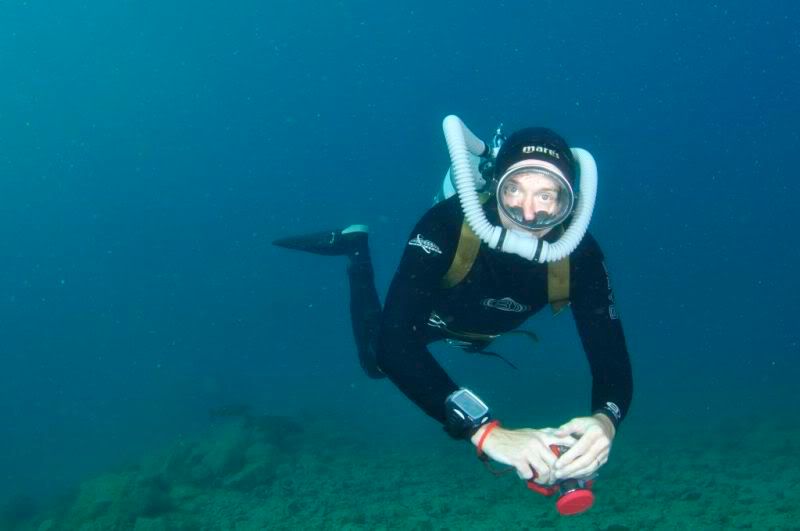Zeagle 50D, hands down. Good, easy-breathing reg, sealed, and has the best warranty in the business. AND, it won't break the bank.
You are using an out of date browser. It may not display this or other websites correctly.
You should upgrade or use an alternative browser.
You should upgrade or use an alternative browser.
Your Favorite Regulator? How did you decide?
- Thread starter The Blue Whale
- Start date
Please register or login
Welcome to ScubaBoard, the world's largest scuba diving community. Registration is not required to read the forums, but we encourage you to join. Joining has its benefits and enables you to participate in the discussions.
Benefits of registering include
- Ability to post and comment on topics and discussions.
- A Free photo gallery to share your dive photos with the world.
- You can make this box go away
jefffalcone
Contributor
I have and have had a lot of regulators. I keep coming back to my apeks tx-50/ds-4's. They may be a couple generations old, but they have not given me a reason to replace them. They work well in a variety of environments and handle cold water with ease. I bought them from simply scuba about 8 years ago, about $200.00 each rings a bell.... not too bad by today's standard.
Not bad at all. $200 would be a decent used price for your 8 year old regs. I think I bought mine 2 years ago for about $600
halocline
Contributor
SP pilot, $66. Might be the best breathing single hose 2nd stage ever. MK5 first stage, I think it was around $40. I also like MK10s and especially the D series 2nd stages. I'm pretty fond of my PRAM as well, but it's hard to compare double hose with single hose, they're so different.
But if you want to spend $1000 on a titanium atomic or MK25, be my guest.
But if you want to spend $1000 on a titanium atomic or MK25, be my guest.
The Blue Whale
Contributor
Great input and thanks for helping us with the direction we'll go with the demos. We realize that a demo should not be a 'pool' test. So, next month in Roatan we're going to have six different regulators set up with duct tape over the second stage (keeping the buttons operable). The idea is that the regulators will be numbered not identified by brand. We've got two of them set up with some special performance things and the other four are tested to factory settings. Over six dives we'll have six divers try all of the regulators and vote on the 'best', 'worst', and 'prefer over the others'. Some might actually like something different than their choice for 'best'. A longer test will be on several regulators that are going to be placed into a rental program and monitored after use over 6 months. The test won't actually be a 'blind' test because of the experience which the divers have, but we'll get an interesting review and demo from what we are trying to accomplish. Also, I'm going to let them see what we used in the Navy back in the 70s with my old NavCon which amazingly still works (at least on the surface).
Downing
Contributor
Atomic T2x, upgraded from a T2.
Titanium has a fantastic weight to strength ratio and is the ultimate in corrorosion resistance.
My wallet got over the pain a long time ago, and now I enjoy a lifetime of reliable, easy breathing with a minimum of care.
Titanium has a fantastic weight to strength ratio and is the ultimate in corrorosion resistance.
My wallet got over the pain a long time ago, and now I enjoy a lifetime of reliable, easy breathing with a minimum of care.
So, next month in Roatan we're going to have six different regulators set up with duct tape over the second stage (keeping the buttons operable). The idea is that the regulators will be numbered not identified by brand. We've got two of them set up with some special performance things and the other four are tested to factory settings. Over six dives we'll have six divers try all of the regulators and vote on the 'best', 'worst', and 'prefer over the others'
Results should be very interesting. Do you think it would be worth separating breathing characteristics, ergonomics, and second stage dryness in your rating system? Perhaps it would encourage people to think more objectively and critically.
It may also be interesting to note which regulator each test subject uses normally since it will be hard to hide the identity with duct tape or account for the familiarity factor.
Greg Barlow
Contributor
My favorite reg happens to have been built in 1961. The Voit 50 Fathom had a grand total of 5 moving parts, and not a single O-ring. The first edition was painted with blue enamel paint, and was introduced in 1959. The diaphragm lever has been removed for the internal mechanism photograph to better illustrate the valve mechanism.
It was designed by Gagnan himself, and was unique in that it was a downstream single stage design. Utter simplicity, and an extremely rugged mechanism.
One of my plastic bodied Voit V55 Blue 50 Fathom regs was taken to 150ffw last July, and was still breathing quite well. That is no surprise, as the preliminary testing demonstrated that the reg could meet USN standards all the way down to 300ffw. Considering that 1 fathom=6 feet is where the name "50 Fathom" came from. For safety's sake, I was also using a slung bail-out bottle. While I didn't need the safety system, it is comforting to have when venturing into deeper waters. I also don't advocate diving with vintage equipment unless you have the proper training and experience to do so.
My favorite modern reg is the Mares V42 Proton Metal. Again, excellent breathing performance with a very rugged design.






Greg Barlow
Former Science Editor for Rodale's Scuba Diving Magazine
It was designed by Gagnan himself, and was unique in that it was a downstream single stage design. Utter simplicity, and an extremely rugged mechanism.
One of my plastic bodied Voit V55 Blue 50 Fathom regs was taken to 150ffw last July, and was still breathing quite well. That is no surprise, as the preliminary testing demonstrated that the reg could meet USN standards all the way down to 300ffw. Considering that 1 fathom=6 feet is where the name "50 Fathom" came from. For safety's sake, I was also using a slung bail-out bottle. While I didn't need the safety system, it is comforting to have when venturing into deeper waters. I also don't advocate diving with vintage equipment unless you have the proper training and experience to do so.
My favorite modern reg is the Mares V42 Proton Metal. Again, excellent breathing performance with a very rugged design.






Greg Barlow
Former Science Editor for Rodale's Scuba Diving Magazine
Scubad1ver
Registered
SP MK25/A700; it doesn't matter if your at 15fsw or 130fsw, breathing is smooth and easy.
Similar threads
- Replies
- 2
- Views
- 177
- Replies
- 42
- Views
- 2,968
- Replies
- 29
- Views
- 3,246
- Replies
- 47
- Views
- 8,284
- Replies
- 4
- Views
- 1,827




